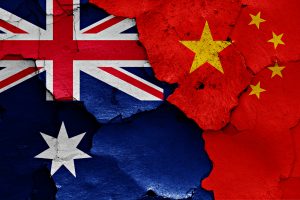As Australia moves closer to a federal election, national security has emerged as a major Coalition government campaign pillar, with China cast as the primary strategic challenge facing the nation.
The government has gone on the offensive with respect to the opposition Labor Party’s record on national security, and, in particular, its approach to China, resulting in an increasingly heated clash of views and political rhetoric. Charges of “appeasement” have been levelled at Labor, with the opposition leader being accused of having “backed in the Chinese government” and of being Beijing’s “pick” in the upcoming election. Prime Minister Scott Morrison stated in Parliament in February, “Our government is setting a high bar when it comes to national security … I wish it were true that there was stronger bipartisanship.”
The Labor Party has, for its part, repeatedly insisted that bipartisanship on national security and foreign policy continues to be the order of the day.
In order to examine these claims, the Australia-China Relations Institute at the University of Technology Sydney recently undertook a qualitative survey of 16 policy positions on China and national security. The report demonstrates conclusively that both parties are in agreement on all issues. This agreement ranges from supporting an increase in defense spending above a floor of 2 percent of GDP to taking a firm stance against Beijing’s trade sanctions; from refusing to consider Beijing’s bid to enter the Comprehensive and Progressive Agreement for Trans-Pacific Partnership until sanctions are lifted to bolstering laws governing foreign interference and autonomous sanctions; from ruling out participation in the Belt and Road Initiative to concerns about the mass repression of Uyghurs in Xinjiang.
There is clear policy convergence on the need to push back against Beijing whenever its actions are bullying or coercive.
Where divergence does occur between the parties, it is on how policies are to be best effected. The opposition has made it plain that it will place more of an emphasis on diplomatic tone and conduct. A Labor government would also elevate the role of the Department of Foreign Affairs and Trade (DFAT). Shadow Foreign Minister Penny Wong said in February that Australia’s “diplomatic capability” needs to be increased. She said last year, “DFAT needs clearer political leadership and a sharper understanding of its role, responsibilities, and its potential.” She has also pledged that Labor would appoint an Association of Southeast Asian Nations (ASEAN) special envoy “to complement our diplomatic network, and forge close relationships with capitals.”
There is divergence, too, with respect to the ideological underpinnings of each party’s worldview.
Around the middle of last year, Morrison began to frame the government’s view of the world in stark ideological terms, as one best understood through the prism of liberal democracies versus authoritarianism. It is illuminating, here, to compare two statements by the prime minister, one from 2019 and one from 2021. In October 2019, Morrison declared, “[I]f you look at this [the rise of China] as some great ideological struggle between two worldviews, well that can take you to a very dangerous end, and I don’t subscribe to that analysis. I don’t think it’s in Australia’s interests.” In June 2021, in a speech entitled “A world order that favours freedom,” Morrison signaled a swing toward the framing he had previously warned against, exhorting liberal democracies to “[step] up with coordinated action” and “show that liberal democracies work for all.” Subsequent speeches have confirmed the embrace of this worldview despite some initial mixed messaging, culminating with a warning on March 7 that a new “arc of autocracy” was emerging “to challenge and reset the world order in their own image.”
The opposition has as yet neither endorsed nor engaged with this outlook, veering away from presenting its worldview through a similar binary prism. It is yet to give clearer shape to its foreign policy vision and where its approach to China fits within its wider approach to the world.
Ultimately, the fundamental concurrence between the Coalition and the Labor Party on the substance of Australia’s China policy faces two major challenges. First, there is pressure from within, as figures in both parties push for an even tougher line toward Beijing. Second, there is pressure from without, as the yet unknown flow-on effects from developments on the world stage materialize, such as what the joint Russia-China statement yields, as well as the aftermath of the invasion of Ukraine. Whichever party takes office following the May election will face issues and challenges that will make the management of Australia’s China policy different from what has existed in recent years.

































